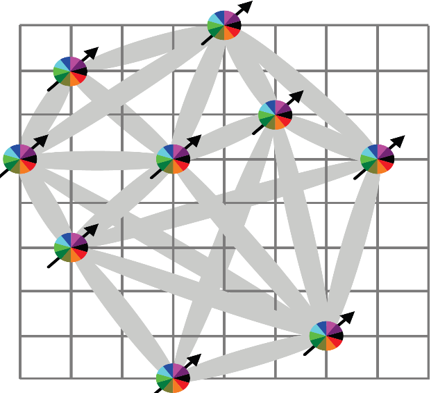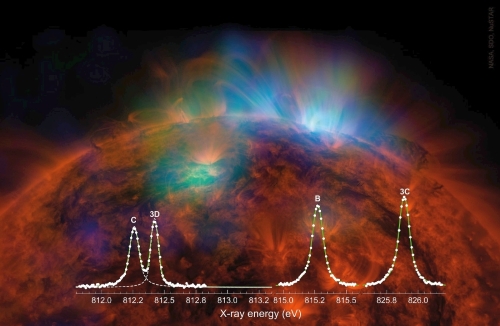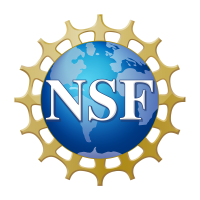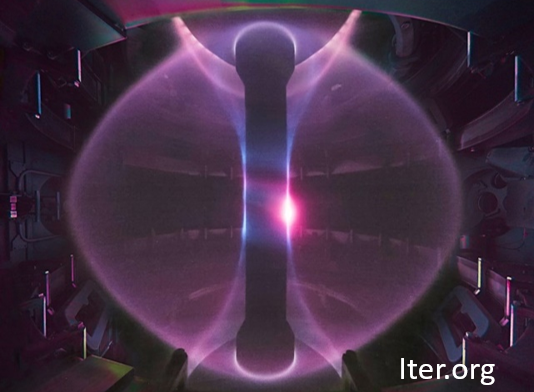Development of high-precision atomic methodologies
Numerous applications need precise atomic data

Development of atomic clocks

Particle physics: Searches for dark matter and other “new” physics

Astrophysics

Ultracold atoms and quantum simulation

Nuclear and hadronic physics - extracting nuclear properties
In many present applications ranging from the search for new physics to the development of future technologies, accurate atomic theory is indispensable to the design and interpretation of experiments, with direct experimental measurement of relevant parameters being impossible or infeasible. The broad goal of this research is to develop methodologies that allow to compute atomic properties for any atoms with high precisions. One of our present goals is elevating the treatment of d- and f-shell atoms to the same level now possible for simpler systems: a challenging prospect that opens up much of the Periodic Table to applications that heretofore could only be pursued with the simplest atoms. Such precision is required in many current applications, including studies of fundamental interactions, atomic clock research, analysis of astrophysical data, plasma science, studies of degenerate quantum gases, and quantum information. Further rapid advances in applications involving complex atoms will require accurate knowledge of basic atomic properties, most of which remain highly uncertain and difficult to measure experimentally. Moreover, the search for further applications of rich, complex atomic structures is hindered by the lack of a reliable theoretical framework.
Recent research highlights
First test of QED computations in a ten-electron system
The energy accuracy of the strongest soft X-ray transitions of Fe XVII ions was improved by a factor of 4-20 by resonantly exciting them in an electron beam ion trap with a monochromatic beam at the P04 beamline of the PETRA III synchrotron facility. By simultaneously tracking instantaneous photon-energy fluctuations with a high-resolution photoelectron spectrometer, we minimize systematic uncertainties down to 10-15 meV, or velocity-equivalent ± ∼5 km/s in their rest energies, substantially improving our knowledge of this key astrophysical
ion. Our large-scale configuration-interaction computations include more than four million relativistic configurations and agree with the experiment at a level without precedent for a ten-electron system. Thereby, theoretical uncertainties for interelectronic correlations become far smaller than those of quantum electrodynamics (QED) corrections. The present QED benchmark strengthens our trust in future calculations of many other complex atomic ions of interest to astrophysics, plasma physics, and for the development of optical clocks with highly charged ions.
High-Precision Transition Energy Measurements of Neonlike Fe XVII Ions, Chintan Shah et. al, The Astrophysical Journal, in press, arXiv:2401.08395 (2024).
Four-decade puzzle of cosmic X-rays solved

Measured X-ray fluorescence spectrum with emission lines 3C and 3D of Fe-XVII, and B and C of Fe XVI. Background image: The Sun in X-ray light, data taken by the NuSTAR space telescope
(© NASA, NuSTAR, SDO).
Very hot gas, such as that existing in the corona of the sun or the close vicinity of black holes, emits intense X-ray radiation. It reveals which physical conditions, such as temperature and density, are present there. But for decades, researchers have been struggling with a problem: the intensity ratios of important radiation lines of iron measured in the laboratory do not match those calculated, and thus there is also uncertainty about the parameters of the gas derived from the X-ray spectra. Our precision calculation motivated new experiment that agreed with our predictions. As a result, X-ray data from space telescopes can be analysed in the future with a high degree of confidence in the atomic models behind them.
New Measurement Resolves Key Astrophysical Fe-XVII Oscillator Strength, Steffen Kühn, Charles Cheung, Natalia S. Oreshkina, René Steinbrügge, Moto Togawa, Sonja Bernitt, Lukas Berger, Jens Buck, Moritz Hoesch, Jörn Seltmann, Florian Trinter, Christoph H. Keitel, Mikhail G. Kozlov, Sergey G. Porsev, Ming Feng Gu, F. Scott Porter, Thomas Pfeifer, Maurice A. Leutenegger, Zoltán Harman, Marianna S. Safronova, José R. Crespo López-Urrutia and Chintan Shah, Physical Review Letters, 129, 245001.
Physics Viewpoint: Getting a Clearer View of Iron Emission Lines, Roberto C. Mancini, Physics 15, 187 (2022)
This work in the news: X-ray analysis without doubt: Four-decade enigma of cosmic X-rays solved.
Development of full relativistic CCSDT coupled-cluster method

Illustration of single (S), double (D), and triple (T) excitations in the coupled-cluster approach.
Determination of nuclear moments for many nuclei relies on the computation of hyperfine constants, with theoretical uncertainties directly affecting the resulting uncertainties of the nuclear moments. In this work, we improve the precision of such a method by including for the first time an iterative solution of equations for the core triple cluster amplitudes into the relativistic coupled-cluster method, with large-scale complete basis sets. The method developed in this work can be used for any monovalent system and, when combined with configuration interaction, can be extended to systems with 2–6 valence electrons.
Precision calculation of hyperfine constants for extracting nuclear moments of 229Th, S.G. Porsev, M.S. Safronova, M.G. Kozlov, Phys. Rev. Lett. 127, 253001 (2021).
Scalable codes for precision calculations of properties of complex atomic systems

Performance test of new parallel configuration interaction code on 2048 CPUs. Speed up: two weeks for running time reduced to 15 minutes.
We have developed a new parallel atomic structure code package that enables computations that were not previously possible due to system complexity. This code package also allows much quicker computations to be run with higher accuracy for simple systems. We explored different methods of load-balancing matrix element calculations for many-electron systems, which are very difficult due to the intrinsic nature of the computational methods used to calculate them. Furthermore, dynamic memory allocation and MPI parallelization have been implemented to optimize and accelerate the computations. We plan to release all codes to the public, optimized and user-friendly.
Scalable codes for precision calculations of properties of complex atomic systems, C. Cheung, M. S. Safronova, S. G. Porsev, Symmetry 13 (4), 621 (2021).
Other relevant recent publications (2020-2024)
- A clock with 8 × 10−19 systematic uncertainty, Alexander Aeppli, Kyungtae Kim, William Warfield, Marianna S. Safronova, Jun Ye, arXiv:2403.10664, in press, Phys. Rev. Lett. (2024).
- Prospects of a thousand-ion Sn2+ Coulomb-crystal clock with sub-10−19 inaccuracy, David R. Leibrandt, Sergey G. Porsev, Charles Cheung, Marianna S. Safronova, Nature Communications, in press, arXiv:2205.15484 (2024).
- Coherent excitation of a μHz scale optical magnetic quadrupole transition, V. Klüsener, S. Pucher, D. Yankelev, J. Trautmann, F. Spriestersbach, D. Filin, S. G. Porsev, M. S. Safronova, I. Bloch, S. Blatt, arXiv:2401.03934, accepted to Phys. Rev. Lett. (2024)
- Natural-linewidth measurements of the 3C and 3D soft-x-ray transitions in Ni XIX, Chintan Shah, Steffen Kühn, Sonja Bernitt, René Steinbrügge, Moto Togawa, Lukas Berger, Jens Buck, Moritz Hoesch, Jörn Seltmann, Mikhail G. Kozlov, Sergey G. Porsev, Ming Feng Gu, F. Scott Porter, Thomas Pfeifer, Maurice A. Leutenegger, Charles Cheung, Marianna S. Safronova, and José R. Crespo López-Urrutia, Phys. Rev. A 109, 063108 (2024).
- Motional ground-state cooling of single atoms in state-dependent optical tweezers, Christian Hölzl, Aaron Götzelmann, Moritz Wirth, Marianna S. Safronova, Sebastian Weber, Florian Meinert, Phys. Rev. Research 5, 033093 (2023).
- Optical Telecommunications-Band Clock based on Neutral Titanium Atoms, Scott Eustice, Dmytro Filin, Jackson Schrott, Sergey Porsev, Charles Cheung, Diego Novoa, Dan M. Stamper-Kurn, Marianna S. Safronova, Phys. Rev. A 107, L051102 (2023).
- State-Insensitive Trapping of Alkaline-Earth Atoms in a Nanofiber-Based Optical Dipole Trap, K. Ton, G. Kestler, D. Filin, C. Cheung, P. Schneeweiss, T. Hoinkes, J. Volz, M. S. Safronova, A. Rauschenbeutel, J. T. Barreiro, PRX Quantum 4, 040308 (2023).
- Calculations of multipole transitions in Sn II for kilonova analysis, A. I. Bondarev, J. H. Gillanders, C. Cheung, M. S. Safronova & S. Fritzsche, The European Physical Journal D 77, 126 (2023).
- Enhancing divalent optical atomic clocks with the 1S0 – 3P2 transition, Matthew A. Bohman, Sergey G. Porsev, David B. Hume, David R. Leibrandt, and Marianna S. Safronova, Phys. Rev. A 108, 053120 (2023).
- Contribution of negative-energy states to multipolar polarizabilities of the Sr optical lattice clock, S. G. Porsev, M. G. Kozlov, M. S. Safronova, Rev. A 108, L051102 (2023). Physics synopsis: Solution for Atomic Clock Puzzle.
- Calculation of energies and hyperfine-structure constants of 233U+ and 233U, S. G. Porsev, C. Cheung, and M. S. Safronova, Phys. Rev. A 106, 042810 (2022).
- Laser Spectroscopy of the y7PJ states of Cr I, E. B. Norrgard, D. S. Barker, S. P. Eckel, S. G. Porsev, C. Cheung, M. G. Kozlov, I. I. Tupitsyn, and M. S. Safronova, Phys. Rev. A 105, 032812 (2022).
- Magic wavelengths of the Sr (5s2 1S0 – 5s5p 3P1) intercombination transition near the 5s5p 3P1 – 5p2 3P2 transition, Grady Kestler, Khang Ton, Dmytro Filin, Marianna S. Safronova, and Julio T. Barreiro, Phys. Rev. A 105, 012821 (2022).
- Measurement of the tune-out wavelength for 133Cs at 880 nm, Apichayaporn Ratkata, Philip D. Gregory, Andrew D. Innes, Jonas A. Matthies, Lewis A. McArd, Jonathan M. Mortlock, M. S. Safronova, Sarah L. Bromley, Simon L. Cornish, Phys. Rev. A 104, 052813 (2021).
- Low-lying energy levels of 229Th35+ and the electronic bridge process, S. G. Porsev, C. Cheung and M. S. Safronova, Quantum Sci. Technol. 6, 034014 (2021).
- Scalable codes for precision calculations of properties of complex atomic systems, C. Cheung, M. S. Safronova, S. G. Porsev, Symmetry 13 (4), 621 (2021).
- Role of triple excitations in calculating different properties of Ba+, S. G. Porsev, M. S. Safronova, Phys. Rev. A 103, 042815 (2021).
- Observation of an electric quadrupole transition in a negative ion: Experiment and Theory, C. W. Walter, S. E. Spielman, R. Ponce, N. D. Gibson, J. N. Yukich, C. Cheung, and M. S. Safronova Phys. Rev. Lett. 126, 083001 (2021).
- Predicting quasibound states of negative ions, M. S. Safronova, C. Cheung, M. G. Kozlov, S. E. Spielman, N. D. Gibson, and C. W. Walter, Phys. Rev. 103, 022819 (2021).
- Magic wavelengths of the Yb (6s2 1S0 – 6s6p 3P1) intercombination transition, T. A. Zheng, Y. A. Yang, M. S. Safronova, U. I. Safronova, Zhuan-Xian Xiong, T. Xia, and Z.-T. Lu, Phys. Rev. A 102, 062805 (2020).
- Precision measurement of the 3D1 and 3D2 quadrupole moments in Lu+, R. Kaewuam, T. R. Tan, Zhiqiang Zhang, K. J. Arnold, M. S. Safronova, M. D. Barrett, Phys. Rev. A 102, 042819 (2020).
- Hyperfine-mediated effects in a Lu+ optical clock, Zhiqiang Zhang, K. J. Arnold, R. Kaewuam, M. S. Safronova, M. D. Barrett, Phys. Rev. A 102, 052834 (2020).
- Detection of missing low-lying atomic states in actinium, Ke Zhang, Dominik Studer, Felix Weber, Vadim M. Gadelshin, Nina Kneip, Sebastian Raeder, Dmitry Budker, Klaus Wendt, Tom Kieck, Sergey G. Porsev, Charles Cheung, Marianna S. Safronova, Mikhail G. Kozlov, Phys. Rev. Lett. 125, 073001 (2020) .
- State-dependent optical lattices for the strontium optical qubit, A. Heinz, A. J. Park, N. Santic, J. Trautmann, S. G. Porsev, M. S. Safronova, I. Bloch, and S. Blatt, Phys. Rev. Lett. 124, 203201 (2020).
- Branching fractions for P3/2 decays in Ba+, Zhiqiang Zhang, K. J. Arnold, S. R. Chanu, R. Kaewuam, M. S. Safronova, M. D. Barrett, Phys. Rev. A 101, 062515 (2020).
- High-resolution photo-excitation measurements exacerbate the long-standing Fe XVII emission problem, Steffen Kühn et al., Phys. Rev. Lett. 124, 225001 (2020). Physics Synopsis: Resolving Discrepancies in X-Ray Astronomy.
- Optical clocks based on the Cf 15+ and Cf 17+ ions, S. G. Porsev, U. I. Safronova, M. S. Safronova, P. O. Schmidt, A. I. Bondarev, M. G. Kozlov, I. I. Tupitsyn, Phys. Rev. A 102, 012802 (2020).
- Calculation of higher-order corrections to the light shift of the 5s2 1S0 – 5s5p 3P0 clock transition in Cd, S. G. Porsev and M. S. Safronova, Phys. Rev. A 102, 012811 (2020).
- Accurate Prediction of Clock Transitions in a Highly Charged Ion with Complex Electronic Structure, C. Cheung, M. S. Safronova, S. G. Porsev, M. G. Kozlov, I. I. Tupitsyn, and A. I. Bondarev, Phys. Rev. Lett. 124, 163001 (2020).
- Combining experiments and relativistic theory for establishing accurate radiative quantities in atoms: The lifetime of the 2P3/2 state in 40Ca+, Ziv Meir, Mudit Sinhal, Marianna S. Safronova, and Stefan Willitsch, Phys. Rev. A 101, 012509 (2020).
- Magic wavelength of the 138Ba+ 6s 2S1/2 – 5d 2D5/2 clock transition, S. R. Chanu, V. P. W. Koh, K. J. Arnold, R. Kaewuam, T. R. Tan, Zhiqiang Zhang, M. S. Safronova, and M. D. Barrett, Phys. Rev. A 101, 042507 (2020).

Supported by the National Science Foundation
NSF-BSF: Development of High-Precision Atomic Methods and Dark Matter Searches, NSF Division of Physics, Award Number # 2309254.
NSF-BSF: High-Precision Atomic Methodologies and New Physics Searches, NSF Division of Physics, Award Number # 2012068.

